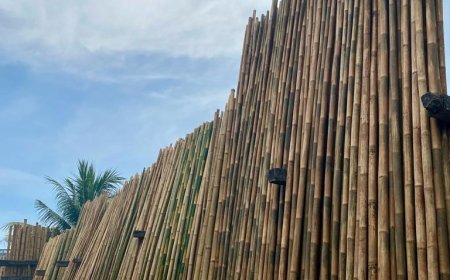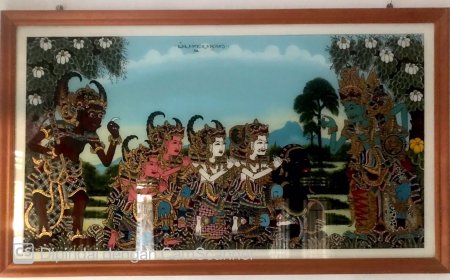Exploring the History and Harmony of Gamelan Rindik
Gamelan Rindik, a traditional musical instrument from Bali, has historical roots linked to the collapse of the Majapahit kingdom. The evacuation of gamelan to Bali during the Demak Kingdom attack brought cultural changes from Majapahit. Rindik, a new evolution of musical instruments from bamboo, has become important in the performing arts and is now appreciated in various contexts, including tourism and therapy. With 11 bamboo blades, Rindik is played by hitting it, producing a slendro melody and tri angga aesthetic, including the head, body and feet in the musical composition. As part of Indonesia's cultural heritage, Gamelan Rindik remains relevant and a means of preserving local wealth.
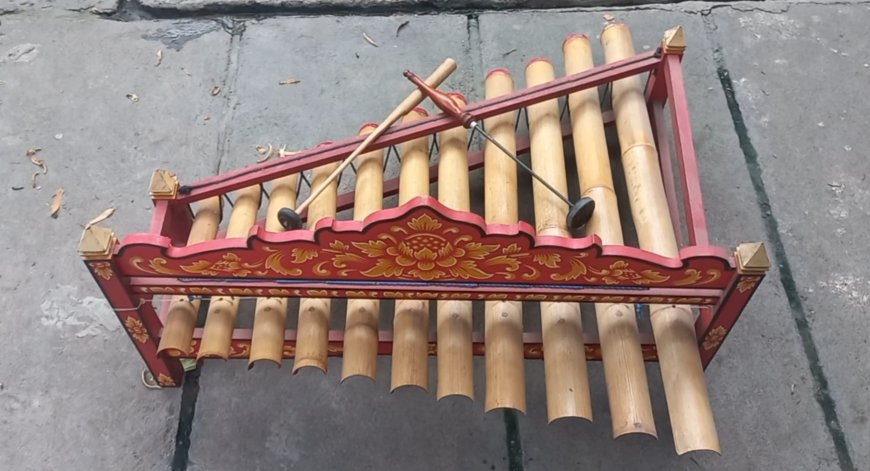
Gamelan Rindik is a traditional musical instrument originating from the island of Bali. Rindik is made from bamboo and consists of several bamboo sticks. The origin of the typical Rindik musical instrument is related to the historical event of the collapse of the Majapahit kingdom, which previously had strong dominance throughout the archipelago. When Ponorogo, an area on the island of Java, rebelled against Majapahit rule, many Reyog angklungs which were previously used as weapons by the kingdom changed their role to musical instruments. Apart from functioning as a weapon, these angklungs later became part of the royal gamelan. When the Demak Kingdom attacked, the angklungs and gamelan ensembles were immediately evacuated to Bali. This move made Bali a new place for the development of artistic and cultural roots that previously came from the Majapahit kingdom. They try to rearrange old musical instruments. This process ultimately created a new musical instrument called Rindik. The Rindik musical instrument then evolved according to local wisdom on the island of Bali, which is made of bamboo with salendro notes and played by hitting. The Rindik musical instrument is included in the idiophone type of musical instrument. Idiophone is a musical instrument that is played by hitting it.
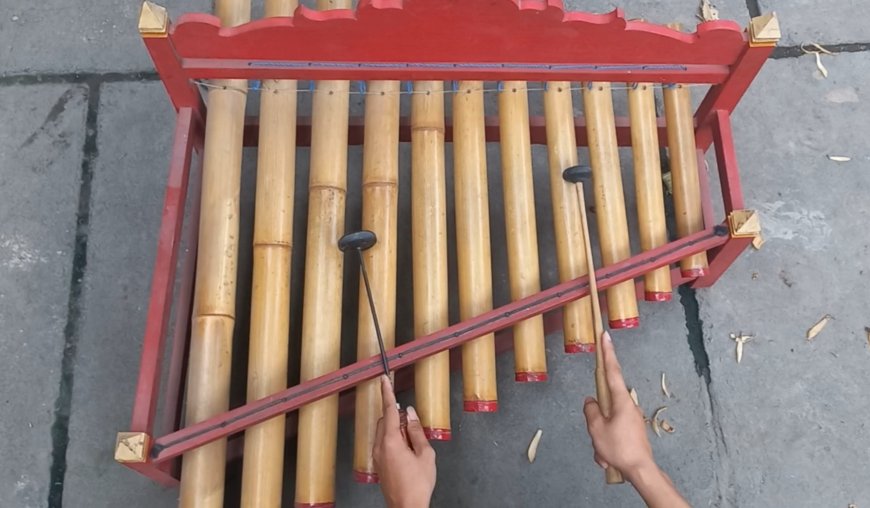
Rindik Musical Instrument (Photo Source : Private Collection)
The Balinese rindik gamelan is included in the intermediate gamelan group (originating from around the 16th to 19th centuries) which at that time was used by the Balinese people as a classical Balinese performing art and entertainment which is synonymous with feelings of joy/excitement and calm. Currently, the Balinese Rindik has been adapted for use as a supporting musical instrument in the tourism sector, in the performing arts, as a soothing musical background in reflexology therapy. Balinese Rindik can be played by 3 to 5 people, of which 2 people play the rindik, and the rest play other instruments such as the flute and gong pulu.
Rindik is made from 11 bamboo blades installed parallel. The first bamboo is the largest, has a low pitch and the bamboo that follows it is smaller with an increasingly higher pitch. Rindik is played by being hit using two hips or a bat that is shaped like a wheel at the end and is made of rubber. One hip is held with the left hand, and the other is held with the right hand. The left hand plays the main note and the right hand plays variations. Balinese Rindik has a slendro tune which has 5 main notes starting from the first bamboo which sounds ndung, then ndang, nding, ndong, ndeng, and repeats until the 11th bamboo which returns to the initial note, namely ndung. Rindik uses a combination of on beat/polos and off beat/sangsih systems so that it can produce a resonant and beautiful sound.
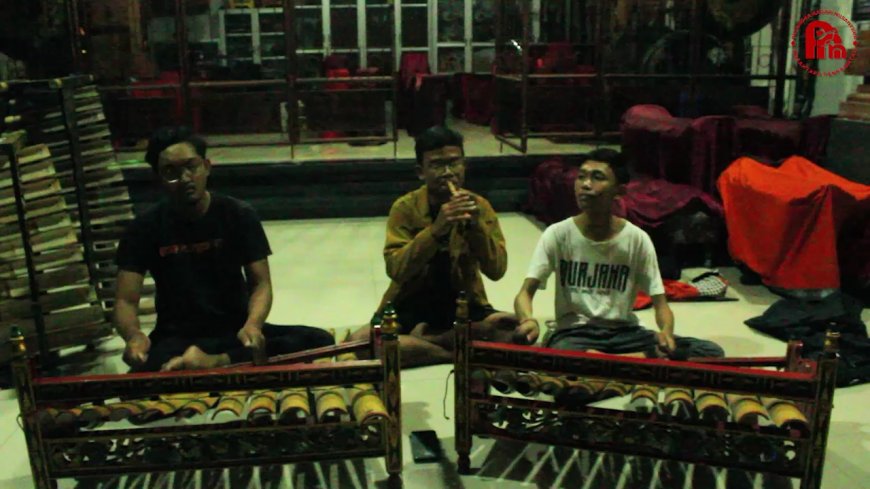
Gamelan Rindik Group's Plays (Photo Source : Private Collection)
Balinese rindik gamelan uses the aesthetic principle of tri angga, which consists of 3 (three) main parts, namely the head (pengawit), body (pengawak), and feet (pangecet).
- Pengawit : Pengawit or head part provides an introduction or introduction to the atmosphere. This is the part where the musician prepares the listener for the upcoming musical experience.
- Pengawak : Pangawak or body parts are the essence of the atmosphere. Here, the main melody and rhythm are played. This is the part that contains the essence of the gamelan rindik music work.
- Pangecet : Pangecet or the tail is the part where the music reaches its highest intensity with a faster tempo. This creates a moment of tension or excitement in the performance.
Indonesia has a rich heritage of traditional musical instruments that remain relevant even though we live in the digital era. It is important to understand and care for the existence of various traditional musical instruments as a form of preserving Indonesia's local cultural riches. As technology develops, efforts to recognize, study and maintain traditional musical instruments become increasingly important in preserving unique local wisdom.



















































